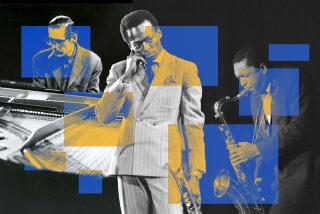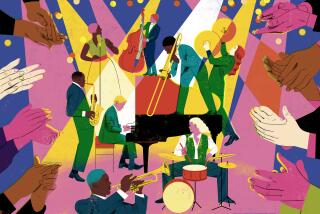Red Hot
In 1993 a young Scot named Duncan McLean won the Somerset Maugham prize for his first collection of short stories and was faced with a predicament: The prize stipulates that its recipients must use their award money to travel abroad, and McLean--quite happily--had never so much as traveled outside of Scotland. But he did have one powerful draw: the music called western swing. Western swing is a combination of jazz, oom-pah, Dixieland, big band, back porch, mariachi and conjunto music that was first played by itinerant musicians often to equally itinerant farm workers in dance halls all over the American Southwest. It thrived from the ‘30s to the ‘60s, and after discovering an old LP by Bob Wills and his Texas Playboys in an Edinburgh junk shop, McLean began a one-man revival of “the stuff that has been sending jolts of musical electricity through me ever since.” So in the summer of 1995 he learned to drive and headed off to Texas on “one Scotsman’s odyssey in search of the true meaning of Texas Swing.” “Lone Star Swing” is the strange and wonderful book about what he found there.
McLean describes western swing as “music that picks up your feet and puts them back down again.” It’s dance music with its origins in cornball cowboy bands like Snuffy Smith and His Feather Merchants. Its finest recordings were laid down by sophisticated dance orchestras often with corporate sponsorships: the Light Crust Doughboys (sponsored by Light Crust Flour), Milton Brown and his Musical Brownies, Adolph Hofner and His Texans (he cannily changed his name to Dolph during the war) and McLean’s idol and grail, the breakdown fiddler Wills. The music had swagger and charm and, as McLean puts it, is “in essence only differentiated from the boosterism and bragging of modern rap groups by relative gentility of expression.” The Texas Playboys, fronted by Wills, started as a “territory band,” working an area mapped out partly by their local radio station’s signal strength and partly by their own stamina. “All musicians active at this time have similar tales,” McLean tells us, “of broadcasting daily--for 30 minutes at noon, say--playing requests, advertising sponsors’ products, reading out listeners’ dedications, plugging forthcoming dances, before jumping into the band bus and driving 10 or 50 or 200 miles to set up for that night’s dance. How far away they traveled was determined by the distance they could drive and still get back in time for the next day’s show.” Western swing began to fade out mid-Elvis, and its practitioners are now few and often infirm (in one instance McLean visits an old folks’ home to hear a performance: “Apart from me--and the staff, who weren’t paying much attention--there weren’t any members of the future generations present.”)
“Lone Star Swing” is scrupulously researched, and McLean’s approach is part exuberant music criticism, part anthropology, part history and part road diary. While educating himself (and us) about his favorite music, McLean tussles with border officials; drops perfect literary references--”I suddenly had the feeling that I’d walked into a Charles Bukowski short story: the fleabit motel, the bottles of cheap wine, the broken-nosed old drunk pissed on winnings from the dog track”; joins a parade at the Presidio Onion Festival; gets hazed by rowdy participants in “The National Narcotic Detector Dog Assn. Annual Convention”; and checks out museums devoted to barbed wire, Satan and minimalist art. It’s an unprecedented combination, and just when you’ve had enough of one bent, McLean shifts into another and so keeps it all fresh, in much the same way a good western swing bandleader would keep it fast and varied to ensure his audience stayed out on the floor (at 10 cents a dance).
The book is structured as a straightforward chronicle of McLean’s journey, starting in the Louisiana border town of Jefferson, Texas, the birthplace of Vernon Dalhart, the first country performer to achieve national recognition--and ending up in the Texas panhandle town of Turkey, where the Wills family settled after walking halfway across Texas in search of work picking cotton. Each chapter feels like an invitation to a new dance. They all begin with a reproduction of an invitation, calling card or a promotional flier from a bygone western swing band. “Howdy Cousin, Howdy!” says one. “This is a Complimentary Pass to Our FANCLUB DANCE . . . Wear Your Boots, Hat and Overalls . . . If You Are Not of Age Give This Pass to Someone Who Can Use It.”
Wills and McLean are the only fixed points in this book’s white line fever. McLean scours the state for people who knew Wills, who died in 1974. “Bob Wills? Couldn’t play to save himself. A showman is all he was,” says one white-bearded drummer.
And Buddy Ray, a 75-year-old blues vocalist whom McLean finds “tearing up the small jazz venues of Fort Worth” less than a year after major heart surgery, remembers what sort of a showman Wills could be: “Ha! Bob? Bob really couldn’t play. Not jazz, anyway. Breakdowns, maybe, but not jazz. Bob Wills was a two-fingered fiddler. . . . So, my first gig with them, I was singing ‘Outskirts of Town’--Bob heard I liked the blues, you see--when I heard this holler right at my elbow. It was Bob doing his famous Ah-ha! But I’d never heard him do that jive-talking shit before, see, and I just got such a shock that I jumped in the air, stopped singing. And Bob got such a shock at me stopping singing that he stopped hollering! . . . You knew you were doing something right if Bob started yelling!”
“Lone Star Swing” might be criticized for an excess of nostalgia. McLean barely speaks to anyone under 60, but when he stumbles upon a Mexican orquesta, Los Latigos del Norreno, playing conjunto to a packed Lions Club in the economically depressed borderlands, he finds the vibrancy that brought him to Texas. “Suddenly I started to get very excited,” he says, “for it struck me that this was as close to western swing in the raw as I was ever likely to get. . . . [T]here was a similar feeling of hilarity lurking just below the surface: The keyboard player would play a bum note halfway through an ambitious solo, and rather than try to cover it up, he’d go completely over the top . . . laughing and jumping up and down, raking the keys with the backs of his hands! playing chords with his forehead. Los Latigos’ main function was simple--to get people on the floor. . . . [T]hey were doing exactly the same job as Bob Wills and all the rest of the western swingers. And doing it very well. The whole hall was a mass of jiving, jigging, polkaing, pogoing humanity. . . . This was what my Texas trip was all about: the power of the music, the way conjunto or western swing or Orkney fiddling turns desperation into celebration.”
True to the spirit of Wills, McLean gives the sort of resourceful, witty, genuine, slightly folksy literary performance that you end up reading aloud to any available bystander. It’s no mean feat to do what he does in “Lone Star Swing”: He takes a largely forgotten genre of music and by the force of his knowledge and enthusiasm convinces us that it is the most raw, red hot and American stuff ever recorded.
More to Read
Sign up for The Wild
We’ll help you find the best places to hike, bike and run, as well as the perfect silent spots for meditation and yoga.
You may occasionally receive promotional content from the Los Angeles Times.






